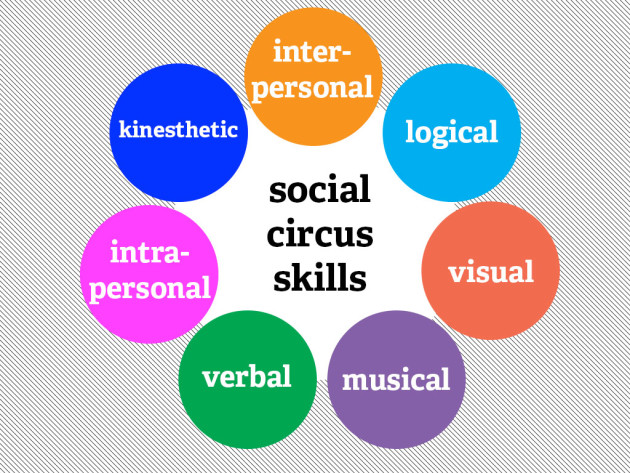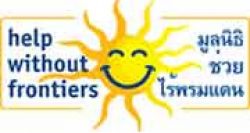 Humans have a lot of ways of expressing their innate talents. We’re clever and creative. Unfortunately, most schools don’t explore the spectrum of “multiple intelligences” that each student has. Classroom education generally focuses on verbal and logical modes, often leaving behind the students who are gifted in movement, music, spatial, and personal interaction. This can be especially true in underfunded schools and disadvantaged communities in where basic education is the goal.
Humans have a lot of ways of expressing their innate talents. We’re clever and creative. Unfortunately, most schools don’t explore the spectrum of “multiple intelligences” that each student has. Classroom education generally focuses on verbal and logical modes, often leaving behind the students who are gifted in movement, music, spatial, and personal interaction. This can be especially true in underfunded schools and disadvantaged communities in where basic education is the goal.
Social circus programs can fill this gap. Circus training touches on many of the multiple intelligences that aren’t encouraged in school. Children and adults who participate in Spark Circus programs gain practice and new perspectives in some of these ways:
Musical
Circus connection: music, dance, juggling
The circus is full of sounds, rhythms, tones, and music. People with musical intelligence sing, play musical instruments, and have sensitivity to rhythm. Spark students use music almost daily by connecting their movements to music, playing instruments, and singing. Making music isn’t the only way we use rhythm – juggling is a highly rhythmic circus skill!
Visual and Spatial
Circus connection: aerial, juggling, dance…and almost all circus arts
This area deals with spatial judgment and the ability to visualize with the mind’s eye. Aerialists have strong spatial skills, as do almost all circus performers and students. This helps us to move around the stage and to imagine our movements and actions before we do them.
Verbal
Circus connection: clown & character perfomance, MC/ringmaster
People with verbal intelligence are good at reading, writing, telling stories and memorising words. We use verbal skills in the circus to help us create our patter and dialogues and to memorise them.
Logical
Circus connection: show planning, act development, prop and set design & creation
Logical students use reasoning, abstraction, and critical thinking. Social circus boosts this important skill in many “behind the scenes” areas like set construction, lighting and sound design, and planning the flow of a show from beginning to end.
Kinesthetic
Circus connection: dance, acrobatics, unicycle…and almost everything else
Kinesthetic intelligence allows us to control our body and to handle objects skilfully. That sums up all circus performance! Every circus student develops his or her timing, response and reaction, and gains an ability to understand the goal of a physical action.
Interpersonal
Circus connection: all group acts
Circus is not a solo activity. We work in teams, pairs, and groups to put on a show. As we train and rehearse our acts, interpersonal skills are critical to getting along, sharing ideas, and working toward a common goal.
Intrapersonal
Circus connection: developing as a performer
Intrapersonal skill has to do with self-reflection. It is important for future performers to develop the ability to identify strengths or weaknesses and what makes one unique. We guide healthy introspection with questions and feedback.
Participating in social circus projects like Spark Circus boosts a young person’s ability in many ways. Support us, or your local social circus project, and you’ll be changing a child’s education with a lifelong effect that comes in just a few weeks.


